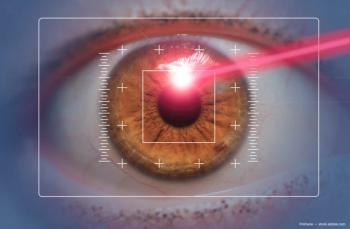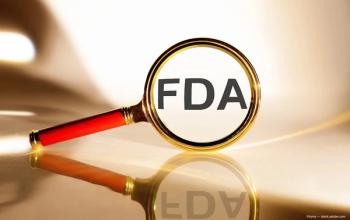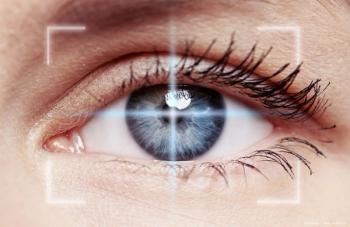
Dry eye gains importance in glaucoma care
New treatments and greater awareness are making dry eye an even more important part of glaucoma care, according to Richard Lewis, MD, of Sacramento Eye Consultants.
New treatments and greater awareness are making dry eye an even more important part of glaucoma care, according to Richard Lewis, MD, of Sacramento Eye Consultants.
Sponsored:
“The treatment has really improved,” said Dr. Lewis at the 21st annual Glaucoma Symposium during the Glaucoma 360 meeting. He cited lifitegrast (Xiidra, Shire), which gained FDA approval in July 2016, and an experimental new nasal nerve stimulator (TrueTear, Allergan), whose new drug application is now under FDA consideration.
Awareness of dry eye is increasing, partly as a result of a campaign Shire has launched featuring advertisements with actress Jennifer Aniston, he noted.
Related:
“People are coming out of the woodwork now with dry eye,” Dr. Lewis said.
As a result, glaucoma specialists must pay more attention to the condition.
“Not many people in glaucoma want to talk about dry eye,” he said. “We all have patients, and we wish they would go elsewhere. But they’re not going elsewhere.”
Depending on the definition of the condition, estimates of the prevalence range from 7.8% for 48.0%, but Dr. Lewis considers the Beaver Dam study figure of 14.4% closest to the reality.
And even some patients who don’t have the condition when they begin glaucoma treatment end up with dry eyes as a reaction to glaucoma medications.
“There is no one better than myself for creating dry eye with some of the drops I use,” Dr. Lewis said.
More:
Alpha agonists in particular can elicit follicular conjunctivitis, he pointed out.
And nearly 60% of medically treated glaucoma patients report ocular surface disease, he said.
Dry eye in turn can complicate care of glaucoma, because it interferes with the reliability and reproducibility of visual field tests, optical coherence tomography, and topographical measurements for cataract surgery.
Tear film is the first refractive interface, he said. And the anterior surface of the precorneal tear film has the greatest optical power of any ocular surface.
Resident Writer's Award:
But more glaucoma treatments have become available that avoid causing dry eye, such as microinvasive glaucoma surgery (MIGS) and selective laser trabeculoplasty.
In addition, new intracameral drug delivery systems have become available that can also avoid dry eye as a side effect.
And dry eye treatments have gotten better, too. Dr. Lewis helped test TrueTear, a device that is inserted into the nose to stimulate nerves that trigger tear production, much in the way cutting onions causes tearing.
“This is a concept that I’m really exciting about,” Dr. Lewis said. “Patients refused to give the device back. This will transform the treatment of dry eye.”
More:
A similar principle-neurostimulation-is being used in other conditions, including Parkinson’s disease, he said.
Dry eye diagnostics are also improving, Dr. Lewis said, but he still considers tear breakup time the most useful.
If glaucoma specialists need any other guiding principle when faced with dry eye, they should consider the principle “do no harm,” he concluded.
Newsletter
Don’t miss out—get Ophthalmology Times updates on the latest clinical advancements and expert interviews, straight to your inbox.
















































.png)


